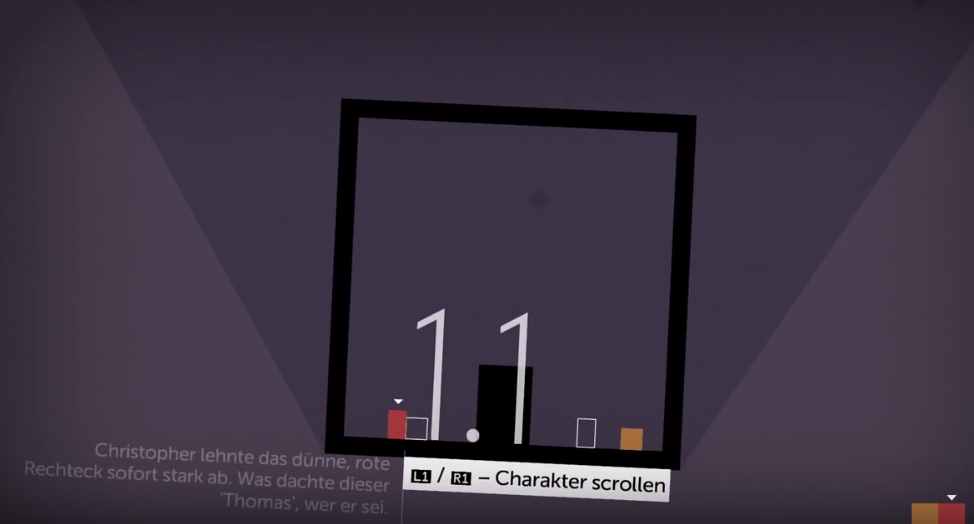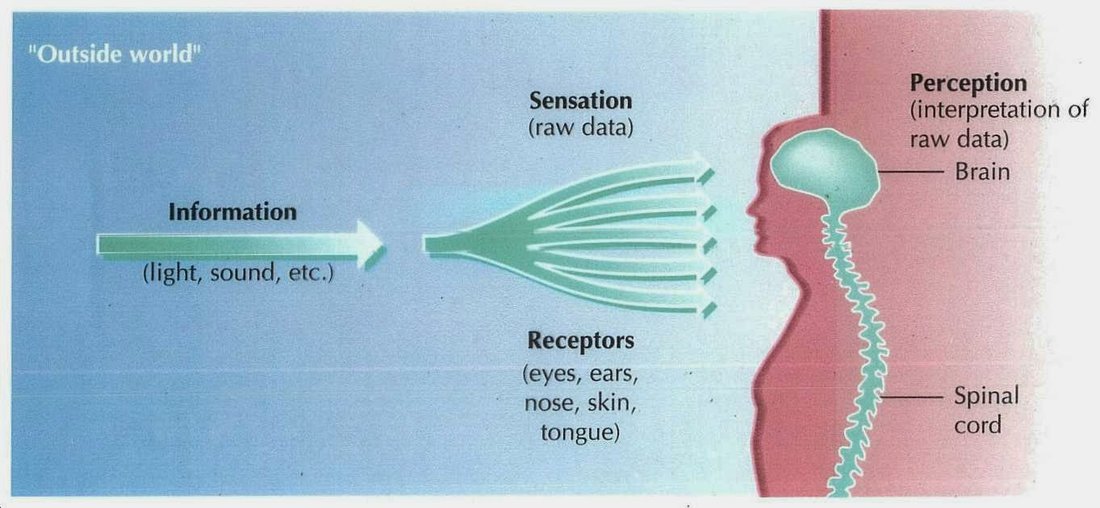Perceiving is believing, or is it really? We have five basic senses which we use to perceive the world with: smell, taste, touch, seeing and hearing. But there is a difference between sensing and perceiving. Our senses provide us with raw data from the environment around us. This raw data can be visuals from our eyes, airborne chemicals our noses pick up, tastes on our tongue, soundwaves via our ears or tactile (touch) information from our skin. Perception, on the other hand, is the way our brain organizes and interprets this raw data. We use our perception to make sense of what we sensed. Perception can be influenced by the context in which the stimuli (what we have sensed) presented, our expectations and our current mood. What you see isn’t always what you get and that is true for all senses. Perceiving isn’t always believing.
Our brain works in weird ways which affects our perception too. Sometimes you don’t perceive something you’ve sensed or you perceived something that wasn’t there in the first place (Gosselin & Schyns, 2003). Our brain can also play tricks on our perception. It can interpret the stimuli in weird ways. Optical illusions are a fun example of how our perception works, below are a couple examples. How can two colors be the same while you perceive them as different? Illusion 1 is an example of how context and expectations shape your perception. Square A and B are the same shade of grey but your brain interprets them as completely different. You see a checkerboard and expect a certain pattern, A is supposed to be black and B is supposed to be white. Combine this with the contexts of the shadow: your brain expects the squares in the shadow to be darker. Sometimes your brain makes you see things that aren’t there. You probably sees a black triangle laying on top of three circles and a white triangle in illusion 2. That is your brain filling up the gabs. There is no black triangle, the triangle is a lie! There are just three white pizza’s all with a missing slice and three lines with the same angles. Illusion 3 is a picture of two faces or a vase. It all depends on the angle you are looking from, but you can never see both at the same time.
How we perceive these illusions depends on our perceptual sets. A perceptual set is the tendency to interpret a stimulus in a certain way only. It is what makes you see the faces before the vase in illusion 3 (or the vase before the faces). Our perceptual sets are heavily influenced by our emotions, expectations, beliefs, context and past experiences.
Perception is sometimes weird and that our brain words in strange ways. You might wonder why we have such a thing as perception in the first place. Why can we not just perceive the world as we sensed it? And what is the function of perception? Perception is quite useful for filtering out the necessary information only. We would go crazy by all the stimuli around us if we would perceive the world as we sense it. We use our perception for attention, to figure out what information is coming in. The incoming information can be filtered through our selective attention, that way our brain ignores anything else but the stimuli of interest. Selective attention is what we use when we become immersed in a game. We only focus our attention to the stimuli from the game and ignore the outside world. Perception is also used for localizing where the information of interest is coming from. When you walk through your town and smell something amazing you might want to wonder where it’s coming from. Or your perception already did the work and you know it was from the bakery across the street. Perception can also help you recognize a stimuli. You smell the bakery and immediately recognize that they just finished baking their bread.
We can also filter out unnecessary information with our senses directly. Our sensory cells respond less and less when a stimulus stays the same for a while. After a while we no longer register the stimulus. This is called sensory adaptation. Think about the pressure of your clothes, you notice it when you put them on and when you move. Most of the day you just won’t notice them due to sensory adaptation. The same happens to the noise your fridge makes or the ticking of your clock. The smell cells in your nose will even stop responding for a while. They need to be given a chance to recover before you can smell again (Dalton, 2000).
Not all senses are equally important to games. Smell isn’t used in games since the smell-o-console hasn’t been invented yet. You’re also not very likely to lick your screen to see what the game tastes like. The only senses we can use in games are vision, hearing and tactile (touch, vibration and pressure). As designers we only have to account for hearing and vision. We have very little control over the feel of the keyboard or controller. Do think about adding vibration occasionally when your game is played with a controller.
Thomas was alone is a favorite of mine because of the excellent use of emotional narration but the game also works well perception-wise. When you play the game for the first time you immediately understand who Thomas is. Considering Thomas is a red rectangle, that is kind of amazing. Thomas was alone shapes the player’s perception with its title, expectations and context. From the title you immediately expect to play or interact with a character named Thomas. You expect Thomas to be one of the characters or perhaps the playable character. The narration adds to this as well once the player starts the game. There is no need to show a big arrow with the word ‘playable character’ written on it, your perception worked it out already. Without its art, the game would be nowhere. The choice for abstract art was a conscious one. It’s not just to play with our perception, it helps our perception. The color scheme of the game is mostly monochrome except for the characters, they really pop-out. From the first interaction it is clear that these colorful rectangles are the objects of interest. Your gaming knowledge matters to your perception as well. It helps you understand where the characters need to go, where you can and can’t go and how to interact with the game in general.

Tips and suggestions
These tips and suggestions can be applied to all types of games. For some genres it might be easier than others but it is good practice to make use of player expectations. Do a little research into other games your target audience plays or research similar games. Find out what these games have in common with each other or what popular gaming conventions are in the genre. If you plan to make a mobile game where players have to slice things in half, look at other games where players slice things in half (hint: Fruit Ninja). How do players interact with the game? Is it a common way to interact with these types of games? Are all good questions to ask yourself. Don’t just blindly copy mechanics and features from a similar game, find out what is common knowledge among your players and what they expect.
Help the player’s selective attention by making use of the pop-out effect for objects of interest. Think about the little shake animation in candy crush. The shake grabs the player’s attention immediately, it’s even visible from the corners of your eyes. Or make use of colors that are brighter than others for objects of interest. This might be the domain of the artists but it is very important for game designers to take this into account as well. It’s the game designer’s task to guide the art team into making decisions that benefit and complement the game design. Audio can also be used in interesting ways to help the player’s perception in the game. You can use it as a mechanic to lure the players or as a way to foreshadow an upcoming monster. Perception is an interesting thing our brain does. We can aid it through our game design or play with it. The possibilities are endless.
References and stuff
- Crash course psychology: https://www.youtube.com/watch?v=unWnZvXJH2o&t=9s
- Gosselin, F. & Schyns, P. G. (2003). Superstition perception reveal properties of internal representations. Psychological Science, 14(5), 505-509.
- Dalton, P. (2000). Psychophysical and behavioral characteristics of olfactory adaptation. Chemical senses, 25, 487-492

